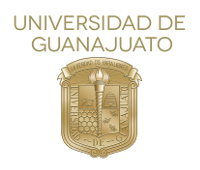Please use this identifier to cite or link to this item:
http://repositorio.ugto.mx/handle/20.500.12059/1932Full metadata record
| DC Field | Value | Language |
|---|---|---|
| dc.rights.license | http://creativecommons.org/licenses/by-nc-nd/4.0 | es_MX |
| dc.creator | DANIEL CHAVEZ VALENZUELA | - |
| dc.date.accessioned | 2020-05-25T18:24:47Z | - |
| dc.date.available | 2020-05-25T18:24:47Z | - |
| dc.date.issued | 2018-12 | - |
| dc.identifier.uri | http://repositorio.ugto.mx/handle/20.500.12059/1932 | - |
| dc.language.iso | eng | es_MX |
| dc.rights | info:eu-repo/semantics/openAccess | es_MX |
| dc.subject.classification | CLE- Doctorado en Física | es_MX |
| dc.title | Design and Development of Cable-in-Conduit superconductor technology for the Magnets of the Future Electron-Ion Collider | es_MX |
| dc.type | info:eu-repo/semantics/doctoralThesis | es_MX |
| dc.creator.id | info:eu-repo/dai/mx/cvu/509372 | es_MX |
| dc.subject.cti | info:eu-repo/classification/cti/7 | es_MX |
| dc.subject.keywords | Design and Development | es_MX |
| dc.subject.keywords | Superconductor | es_MX |
| dc.subject.keywords | Magnets | es_MX |
| dc.subject.keywords | Cable-in-Conduit | es_MX |
| dc.subject.keywords | Electron-Ion Collider | es_MX |
| dc.type.version | info:eu-repo/semantics/publishedVersion | es_MX |
| dc.publisher.university | Universidad de Guanajuato | es_MX |
| dc.description.abstractEnglish | The development of superconducting magnets strongly depends on the superconductor, its critical surface, its winding method (Wind-and-react or react-and-wind), and its ability to be formed into complex bends. The majority of the current superconductors (NbTi, Nb3Sn, Bi2212, MgB2, among others) follow the so-called ”Rutherford topology.” The latter is a geometrical arrangement of superconducting wires, that has been successfully applied to develop most of the superconducting dipoles (Cos ) worldwide. Two significant drawbacks are inherited in this topology: 1. The anisotropy for bending the cable, which limits its forming capabilities in the azimuthal direction, leading to more elaborated magnet designs. 2. The governing heat transfer mechanism is the heat conduction in solids. Unfortunately, this mechanism is not coolant-superconductor, but coolant-metal-epoxy-superconductor. In this work, Is presented an alternative topology for the arrangement of superconducting wires: The Cable-In-Conduit superconductor technology (CIC). In this topology, the superconductors (NbTi, Nb3Sn, Bi2212, MgB2) arranged in a spiral around a coolant channel, allows the superconductors to be fixed and locked in a position avoiding instabilities. The channel enables the coolant to bathe the superconductors proving thermal stability. The heat conduction mechanism is by direct contact between the coolant and the superconductor. Furthermore, in this technology, the CIC posses an inherit isotropy for small-radius bending, which facilitates and potentiates the magnet design. The use of this technology has proven to be a success for developing the superferric magnets for the future Electron- Ion Collider of the Thomas Jefferson National Laboratory (JLEIC). | es_MX |
| Appears in Collections: | Doctorado en Física | |
Files in This Item:
| File | Description | Size | Format | |
|---|---|---|---|---|
| 426585.pdf | 11.19 MB | Adobe PDF | View/Open |
Items in DSpace are protected by copyright, with all rights reserved, unless otherwise indicated.

